Hillel Hayom 2017

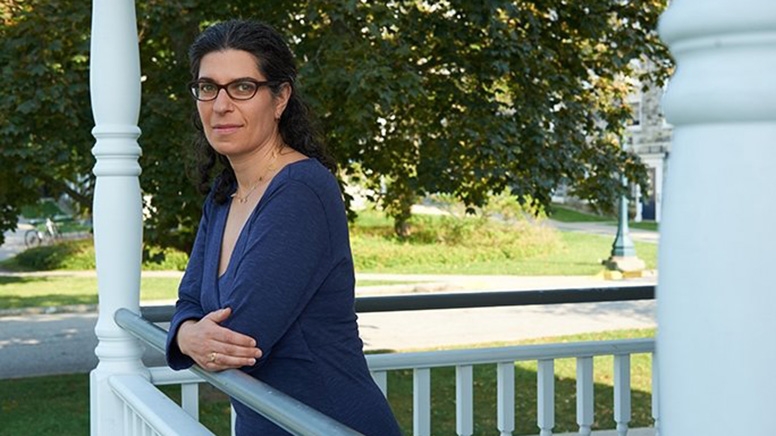
The Challenge of Beginning
There is a Hebrew saying that all beginnings are hard. Moving to a new state and starting a new job is no exception. I can barely find my way across campus. At the same time, newness is wonderful. Like traveling to a foreign country for the first time, I am unsure of myself here, and so my eyes are open to everything. I really see the sky, the mountains, the trees, the cows. I have the delight of discovery—a walk on the TAM, the taste of challah from Otter Creek Bakery. I am reminded of possibility and potential. Anything could happen in this new place! My horizons have been stretched not just by the wide landscape of the campus, but also by getting to know new students and their talents, by seeing every new staff and faculty member as a potential partner in some grand collaboration. And I have been welcomed here by so many, with gifts of maple syrup and challah and with myriad offers of help. You are all eager to share Middlebury with me, and I am eager to know it. Even if the beginning is a little bit hard.
L’shanah tovah,
Rabbi Danielle
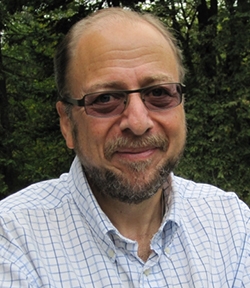
Jewish Studies Update
BY PROFESSOR ROBERT S. SCHINE
Many readers will recall attending the Hannah A. Quint Lecture in Jewish Studies over the years. In 1988, the late Arthur Hertzberg gave the inaugural lecture on the topic “Israel and Palestine: A Battle of Two Rights.” Last year our guest was philosopher Moshe Halbertal (Hebrew University and NYU), who led the audience through a close reading of the biblical episode in which King David orders the extrajudicial killing of the husband of his crush, Bathsheba. The account—so Halbertal—is a subtle critique of political violence and an extraordinary example of ancient historiography.
This year we mark the 30th anniversary of the lectureship with a talk by the dean of historians of American Judaism, Jonathan Sarna of Brandeis University. On November 2, Sarna will place “Contemporary American Anti-Semitism in Historical Perspective.” In addition to Halbertal, several other visitors spoke at Middlebury in the past year:
Jordan D. Rosenblum, University of Wisconsin–Madison, presented “Rabbinic Drinking: What Beer and Wine Teach about Rabbinic Literature.”
Danny Rubinstein, a distinguished Israeli author and journalist, came for a short residency, speaking in classes in the Religion Department and in a forum sponsored by the Middlebury chapter of J Street U.
We also welcomed Reuven Firestone, professor of Medieval Judaism and Islam at Hebrew Union College. An expert on the idea of “holy war”—and the father of Amir ’17—Firestone gave a public lecture on “Savagery and the Sacred” and spoke in Religion Department classes.
All this, in addition to the usual course offerings, was enhanced by some new courses on topics such as the history of Hebrew, Spinoza’s critique of religion, and Judaism and Islam. Hence, Jewish studies, though a small program, continues to broaden in scope.
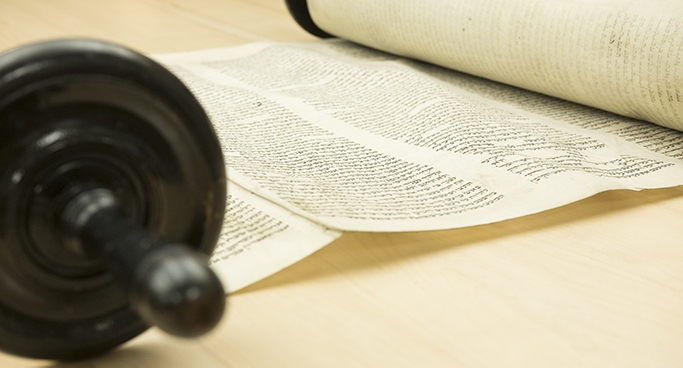
Exploring the Rockdale Torah
This fall, the Rockdale Torah has returned to campus after extensive restoration, cleaning, and appraisal. The approximately 350-year-old Torah is already back in use as a teaching tool for classes ranging from a course on the Ten Commandments to Introduction to Biblical Literature, Introduction to Religion, and Middle East Political Religion.
The Torah has been at Middlebury since Rabbi Victor Reichert, a Reform rabbi from Cincinnati, and his wife, Louise, gifted it to the College in 1990. Reichert was close friends with the poet Robert Frost and summered in Ripton. For many years the scroll had been used at the Rockdale Temple in Cincinnati, where Reichert served for 60 years, from 1926 to 1986.
The conservator, Rabbi Kevin Hale of Northampton, Massachusetts, puts the scroll into its historical context. “The scroll is similar in age and script to many of the 1,564 Czech Memorial Scrolls Trust Torahs that came from Bohemia and Moravia and were rescued after World War II and the Nazi Holocaust. Sold by the Czech government and held by the Trust, which is based in London, these scrolls have been distributed on long-term loan to synagogues throughout the United States.”
He also noted that the Rockdale Torah was written most likely in the third quarter of the 18th century like many of the Memorial Trust scrolls. In addition to having a similar age and script, and being on similar-quality parchment, the Torah contains Kabbalistic elements that include an unusual number of lines per column, right-hand indentations and single line breaks in the text, and large and small letters in addition to those rabbinically approved. Also, there are numerous embellishments on letters including, most notably, spirals contained within the letter peh.
The conservator cleaned centuries of coal dust (both from Cincinnati, and, it’s suspected, from its prior home in Europe) from the parchment; fixed poorly patched areas, removing patches made from masking tape, for example, and replacing them with vellum; and resewed the scroll to both rollers.
Rebekah Irwin, director of Special Collections at Middlebury, notes that in addition to the historic and sacred value of the Torah, it also offers students an ancient example of a practice most employ, in a modern form, multiple times each day: scrolling. “This is the first example many students have seen of how texts were created before the bound book. There was a beginning, and an end, and one had to literally move through the entire text, rather than be able to flip from chapter to chapter as one does with a printed book. This ancient way of reading is very similar to the way we read text messages and online stories today, moving down through a continuous document.”
The Torah’s restoration was funded with support from Special Collections, Jewish studies, and the School of Hebrew. To learn more about the Czech Memorial Scrolls Trust, visit www.memorialscrollstrust.org.
Meet Middlebury’s New Jewish Chaplain, Rabbi Danielle Stillman
“I grew up in a really Jewish household, but not a religious one. At Harvard, I realized that I cared not just about the study of Judaism but the practice of it. That’s when I realized I wanted to be a rabbi.”
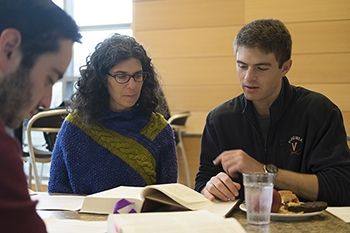
during a Friday “Lunch and Learn.”
Moving to Vermont to become Middlebury’s new Jewish chaplain meant Rabbi Danielle Stillman was choosing a rural Vermont lifestyle for herself and her family.
“I think that Middlebury is a great place to bring earth-based Judaism,” says Stillman, who moved to Weybridge in August with her daughters, Yasmine and Leila, and her husband, Matthew Utterback. Stillman came to Middlebury after serving as director of Jewish student life and associate chaplain at Lehigh University for three years, and at Ursinus College as Hillel director and campus rabbi for six years.
She was first introduced to Vermont’s quality of life when she interned at a Reconstructionist congregation in Bennington. That was part of what brought her to Middlebury, but the main draw was the opportunity to build on the work of Ira Schiffer, Middlebury’s first Jewish chaplain, who retired this past June.
“Ira and I have known each other for the past few years; we were part of a cohort for a fellowship through the Shalom Hartman Institute in Jerusalem. Over some long walks with him, I developed a sense of what Jewish life was like at Middlebury.”
Stillman was first drawn to working with college students when she was a program director for the Netivot Fellowship at Harvard University, where she earned a master’s degree in theological studies. “It’s a special time in people’s lives to be working with them. They’re on their own for the first time, for the most part, so it’s the first time that they are choosing to explore religion on their own. It’s also a time when people are asking the big questions about life: what kind of life do I want to have, what kind of work do I want to do, what kind of community do I want to have? I think Judaism has a lot to say about all of that.”
Becoming a rabbi was not what Stillman had in mind when she was a religion major at Oberlin College. At the time, “I was interested in religion as a phenomenon,” she says. “I had an academic and personal interest in Buddhism.”
When she got to Harvard to pursue her master’s, however, her perspective changed.
“Taking classes on Judaism at Harvard, I had an encounter with Judaism that I hadn’t had before. I grew up in a really Jewish household, but not a religious one. At Harvard, I realized that I cared not just about the study of Judaism but the practice of it. That’s when I realized I wanted to be a rabbi and work with people in all dimensions of religion, not just the study of religion.”
Stillman is excited to be in her new role, and in the interfaith nature of the Scott Center. “I did a lot of work at Lehigh on building interfaith dialogue, and the Scott Center is a place where I could jump right in and continue that work,” she says.
“I envision my role here as supporting the great work that students are doing to support the Jewish community, and bringing my own ideas and perspectives to that work.”
Cantor for 25 Years
AN INTERVIEW WITH AARON MENDELSOHN ’95
“In 2001, Aaron had been Middlebury’s High Holiday hazan for a decade. It was my first year leading services in Mead Chapel. Aaron brought continuity. I was the new kid on the block. The chemistry was magical, and the harmonies we shared sustained me through the long hours of services. The gift of Aaron’s friendship, and that of his family, is one that Linda and I treasure and look forward to continuing in the years ahead.”
—RABBI IRA SCHIFFER
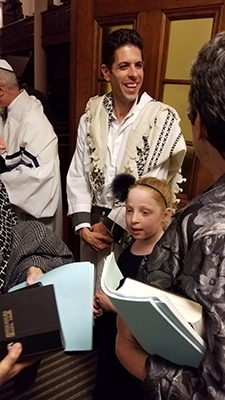
While planning High Holiday services this year, Aaron Mendelsohn ’95 found time to talk about the 25 years he has been leading services as the cantor at Middlebury. Here is what he had to share.
How did you get started leading High Holiday services at Middlebury?
At the beginning of my first full year at Midd in 1992—I was a Feb—I attended High Holiday services in the Château. During Rosh Hashanah, I approached the “rabbi”—actually a visiting rabbinical student—and offered to help. He asked if I knew Hebrew—I said, “A little”—and if I could sing—again I said, “A little.” So they assigned the haftarah of Jonah to me during Yom Kippur. The rest is history.
You’re not a professional cantor. What did you study at Middlebury, and what is your day job?
I majored in history and minored in art history at Middlebury. I then got my JD at Northwestern. I’m an attorney by trade. I’ve spent most of my legal career as a federal prosecutor for the U.S. Department of Justice, and I currently work at Ernst & Young doing fraud investigations. I’ve considered combining my singing and my lawyering by chanting closing arguments to juries, but for now I’ll just have to sing with you.
How did you learn to be such a great prayer leader?
I learned to lead services from singing in choirs at Jewish day schools (and also at St. Albans!) and by leading services at the synagogues I’ve attended over the years in Washington, D.C., Chicago, and New York. In the beginning of my “tenure” as “the Middlebury cantor,” I actually sang most of the piyutim (liturgical poems) to classic rock melodies by the Grateful Dead, the Rolling Stones, and U2. I’ve since learned the traditional melodies, so you won’t be subjected to “Tiku ba’chodesh shofar” to the tune of “Sugar Magnolia” anymore (unless you have requests!).
You’ve been coming up here and doing this for 25 years—what keeps you coming back?
Simple: the community. I love Middlebury and I know that, wherever I may lead services in the future, I’ll never be loved back as much as by you.
How has the Jewish community changed at Middlebury over those years?
That’s easy. First, size. Where once we held services in the Château with 20 to 30 congregants, we now hold services in Mead Chapel with 200 to 300 congregants. Second, knowledge and enthusiasm. Where once I sang alone or with a few scattered voices in the congregation, we now fill the chapel with our loud and melodic chants and prayers.
What is your favorite thing about leading services?
This is the easiest to answer: Singing with everyone and seeing old friends. As I said during Rosh Hashanah, after 25 years of leading services in Middlebury, I know most of the community, and most of you know the prayers and melodies we sing. I love when our voices rise in prayer together—I hate singing alone—and I also love seeing your familiar faces year after year (as well as the new and old students). We’re a unique community, and I’m truly honored to have been a part of it for the past 25 years. Here’s to another 25!
A Decade of Hebrew at the Language Schools
BY PROFESSOR VARDIT RINGVALD
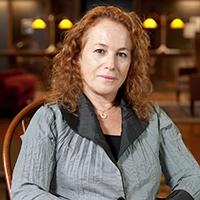
The summer of 2008 brought 27 Modern Hebrew students and five professors to Middlebury’s campus to join the summer immersion experience for the first time. The School of Hebrew (SoH), which was then the smallest Language School in terms of enrollment, has grown exponentially over the last 10 summers and is now one of the largest summer programs, hosting over 150 students and faculty in 2017. The school boasts five different summer programs: a seven-week undergraduate program, a three-week Lifelong Learner program utilizing pedagogy for adult learners, a three-week Classical Hebrew program that focuses on ancient texts, an MA track in teaching Hebrew as a Second Language, and now a DML program that just started this past summer.
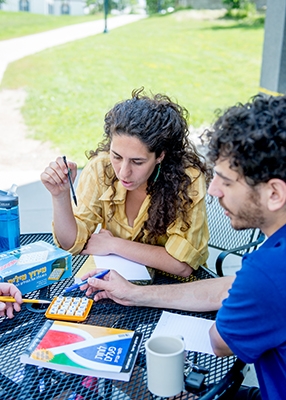
What truly sets Middlebury’s SoH apart is not just its lightning-fast growth but the number of students that the program has drawn from distinct walks of life. Traditionally, Hebrew instruction in the U.S. has attracted mostly Jewish learners, but the SoH serves students from myriad cultures and faiths, all with the common goal of learning Modern Hebrew. Walking into the dining hall during the summer session, you are likely to witness the following scene: an Orthodox Israeli MA student tutoring a student from China, a Christian African American student engaged in a lively discussion about politics with a Muslim student from Saudi Arabia, and a 60-year-old lifelong learner sitting at a table joking with college kids—all in Modern Hebrew. This is the beauty of the Language Schools in action. We at the SoH look forward to a bright future of both acquiring language and using that language to promote engagement and understanding.
Visit middlebury.edu/ls/hebrew to learn more about the School of Hebrew.

